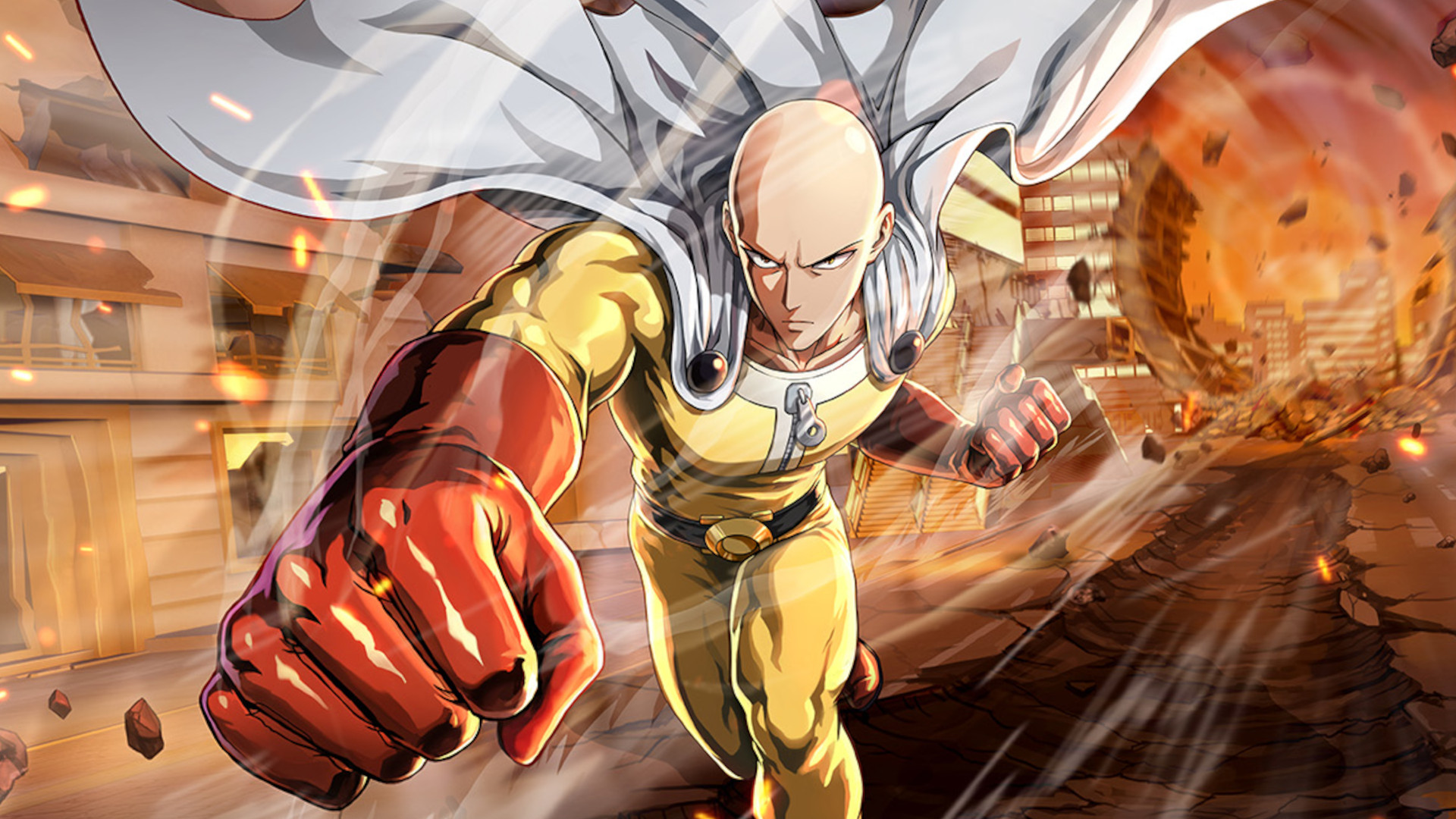Genre: Action, Comedy, Superhero
Season: 2
Episodes: 28
Director: Shingo Natsume (S1), Chikara Sakurai (S2)
Studio: Madhouse (S1), J.C.Staff (S2)
Original Airtime: October 5, 2015 – present
Plot:
One Punch Man” is like a comedic explosion in a superhero factory. A city constantly under siege by colossal monsters, freakish villains, and bizarre creatures needs a hero and a caped baldy named Saitama, who’s so strong that he obliterates said foes with a single, anticlimactic punch comes to the rescue. Despite his unstoppable power, Saitama’s life is—dare I say—boring. The man’s facing an existential crisis. He yearns for a fight that’ll get his adrenaline pumping. The follows his journey as he seeks to climb his way in the heroes guild.
Storyline: 9/10
The storyline of “One Punch Man” unfolds in a world where superheroes are a common occurrence, defending humanity from monstrous threats. At the center of this narrative is Saitama, an unassuming man with an extraordinary secret. He possesses unparalleled strength, capable of defeating any foe with a single, often anticlimactic, punch. However, his immense power has led to an unexpected consequence – he’s become bored.
The show begins with Saitama reflecting on his journey to become a hero. He recounts his decision to pursue this path after defeating a crab-like monster that terrorized his city. Despite his initial aspirations, he now finds himself disillusioned. Every battle ends with a one-sided victory, robbing him of the thrill he once sought.
Saitama’s mundane life changes when he encounters Genos, a cyborg hero seeking vengeance against a mysterious foe who destroyed his hometown. Impressed by Saitama’s power, Genos becomes his disciple, believing that training under him will help him achieve his goal. This apprenticeship introduces Saitama to the Hero Association, an organization that ranks heroes based on their abilities and accomplishments.
Despite his extraordinary capabilities, Saitama struggles to advance in the Hero Association’s rankings. His victories come so effortlessly that they fail to impress the public and other heroes. He often finds himself overshadowed by flashier, less capable heroes who receive more recognition. This discrepancy in recognition becomes a recurring comedic theme in the show.
As the story progresses, the Hero Association faces increasing threats from monsters and villains. Saitama reluctantly becomes involved, not out of a sense of duty, but because he sees the battles as a potential source of excitement. He also encounters various heroes, each with their own motivations and quirks. These interactions highlight the diversity of personalities and powers within the hero community.
One of the most captivating elements of the storyline is the recurring theme of power scaling. Saitama’s overpowered nature often leads to comedic and absurd scenarios, like battles ending before they even begin. This theme also extends to the villains he encounters, some of whom are underwhelmed by the prospect of facing him due to his reputation.
The narrative takes a significant turn with the emergence of the Hero Hunter, Garou. Garou, once a disciple of the Hero Association, becomes disillusioned with heroes and seeks to challenge their dominance. He becomes a central antagonist, engaging in battles against multiple heroes and villains. Garou’s character adds depth to the story by highlighting the complexities of heroism and villainy.
While “One Punch Man” is renowned for its action and humor, it also delves into thought-provoking themes. It questions the nature of heroism, the impact of power dynamics, and the pursuit of purpose. The interplay between Saitama’s overwhelming strength and his unfulfilled desires creates a narrative tension that keeps viewers engaged.
Characters: 10/10
One Punch Man” features a diverse cast of characters, each contributing to the show’s unique blend of humor, action, and introspection. Here are some of the key characters and their roles:
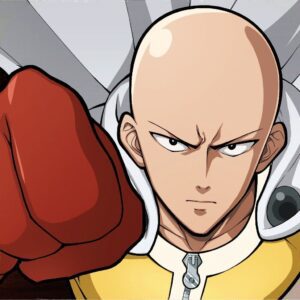
Saitama
The protagonist, also known as "Caped Baldy," is a hero for fun. His intense training has made him incredibly powerful, to the point where he can defeat any opponent with a single punch. Despite his strength, he battles an existential crisis due to the lack of challenging opponents, leading to a sense of boredom.
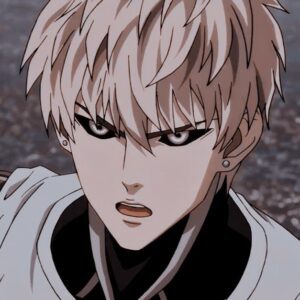
Genos
A cyborg hero with a tragic past, Genos is determined to avenge the destruction of his hometown by a powerful villain. He becomes Saitama's disciple and admires his strength. Genos' character development revolves around his quest for justice and self-improvement.

King
Known as the "Strongest Man on Earth," King is a S-Class hero with a formidable reputation. However, he is wracked with guilt because he is not actually powerful but often credited for victories that were Saitama's doing.
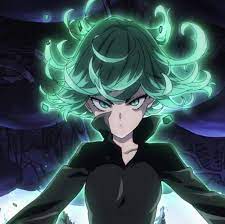
Tornado of Terror (Tatsumaki)
An S-Class hero with immense psychic powers, Tatsumaki has a brash and condescending personality. Her character development delves into her complex past and her strained relationship with her sister.
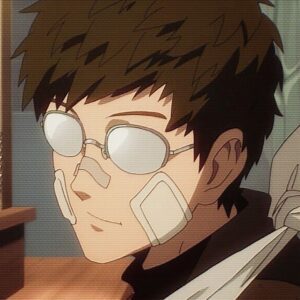
Mumen Rider
A hero who fights for justice on a bicycle, Mumen Rider represents the true spirit of heroism despite lacking superhuman abilities. His tenacity and determination make him a symbol of inspiration.
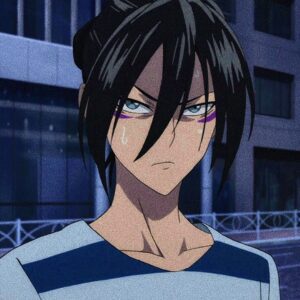
Speed-o'-Sound Sonic
A highly skilled ninja who considers himself Saitama's rival. Despite his arrogance and belief in his own prowess, he repeatedly finds himself outmatched by Saitama's casual power.
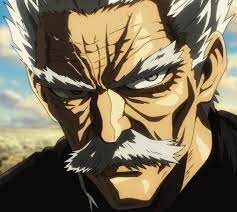
Bang
A martial artist and S-Class hero, Bang is a wise mentor figure known for his incredible combat skills and calm demeanor. He takes Saitama under his wing, recognizing his potential despite Saitama's humble appearance.
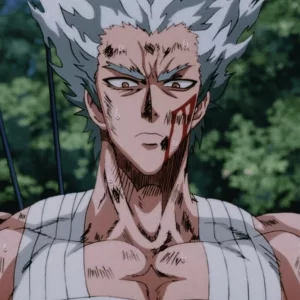
Garou
A former disciple of Bang, Garou turns to villainy as the "Hero Hunter." He seeks to challenge and defeat heroes to prove the strength of the monsters. Garou's character development explores his complex motivations and the line between hero and villain.
Art and Animation: 6/10
The art and animation of “One Punch Man” are notable for their distinctive style and the unique approach taken by the animation studio. The show’s visual elements contribute to its overall comedic and action-packed tone, enhancing the viewer’s experience. Initially, the first season of “One Punch Man” (produced by Madhouse) received praise for its high-quality animation, dynamic fight sequences, and attention to detail. The character designs, backgrounds, and action choreography were all executed with precision, creating visually stunning battles that captured the essence of the manga.
However, it’s important to note that the production for the second season was taken over by J.C. Staff, and there was a noticeable change in animation style. While some viewers appreciated the continuation of the story, there were criticisms regarding the animation quality, which appeared less consistent compared to the first season. One of the standout visual features of “One Punch Man” is how it handles the climactic moments of Saitama’s battles. In order to emphasize Saitama’s overwhelming strength and make the battles more humorous, the animation switches to a more simplistic and comedic art style during these sequences. This stylistic choice intentionally contrasts with the intricate detailing of other scenes and characters, underlining the absurdity of Saitama’s power.
While the animation quality might vary between episodes or seasons, the show’s ability to maintain a unique visual identity remains a notable aspect. The character designs, with their exaggerated expressions and distinctive looks, contribute to the overall comedic atmosphere. The animation style also adapts well to both intense battles and comedic interactions, ensuring that the show’s diverse range of scenes is effectively conveyed.
Music: 7/10
The anime features a diverse range of musical compositions that effectively capture the mood and tone of different scenes.
The opening and ending theme songs are particularly memorable. The opening themes for both seasons are energetic and pump up the audience for the impending action. The first season’s opening, “The Hero!! Set Fire to the Furious Fist,” by JAM Project, sets the stage with a heroic anthem that perfectly aligns with the show’s theme. The second season’s opening, “Seijaku no Apostle” by JAM Project, continues the tradition of energizing openings.
The ending themes offer a contrast to the action-packed nature of the show. These themes often provide a moment of reflection and serve as a cool-down after intense episodes. The music complements the show’s humor and introspective moments, reinforcing the diverse emotions experienced by the characters. In addition to the opening and ending themes, the background music effectively enhances the atmosphere of each scene. The music ranges from intense and suspenseful tracks during battles to more lighthearted and comedic tunes during humorous sequences. The soundtrack skillfully adapts to the shifts in tone, contributing to the show’s dynamic storytelling.
One notable aspect of the music is how it is employed during Saitama’s battles. When he unleashes his signature punch, the music often drops out, emphasizing the anticlimactic nature of his victories and adding a comedic twist to the action.
Final Thoughts:
This anime is a whirlwind of comedic brilliance, jaw-dropping action, and a dash of existential contemplation that I didn’t see coming. Saitama’s character, with his bald head and hilariously indifferent attitude, became an unexpected source of relatability. His struggle with boredom despite possessing immense power felt strangely real, a quirky reminder that even extraordinary abilities can’t guarantee a fulfilling life. It’s a theme that resonates in a world where the quest for excitement often feels as elusive as a villain who can withstand more than one punch.
The animation journey was a rollercoaster, with the first season wowing me with its stunning action sequences and meticulous detail. The switch to a different studio for the second season brought mixed feelings, but it didn’t entirely overshadow the sheer joy of watching heroes and monsters clash in over-the-top battles.
As much as “One Punch Man” is about Saitama’s journey, it’s equally about the array of characters he encounters. From Genos’ determination to Mumen Rider’s unwavering spirit, each hero and villain adds their unique flavor to the narrative. The way the show juggles humor, character growth, and epic fights is an art in itself.
Yet, if I’m honest, there were moments when the pacing felt a tad inconsistent, and the transition between studios raised an eyebrow or two. But these hiccups didn’t dampen my overall enjoyment. “One Punch Man” embraces its quirks and imperfections, turning them into part of its charm.
So, here’s my final take: “One Punch Man” is a thrilling rollercoaster ride that doesn’t just celebrate the superhero genre; it twists it into a hilarious, action-packed extravaganza. It reminds us that even in a world of overwhelming strength, the search for purpose and excitement remains a universal struggle. And maybe, just maybe, we could all use a bit of Saitama’s nonchalant humor to navigate our own challenges.

